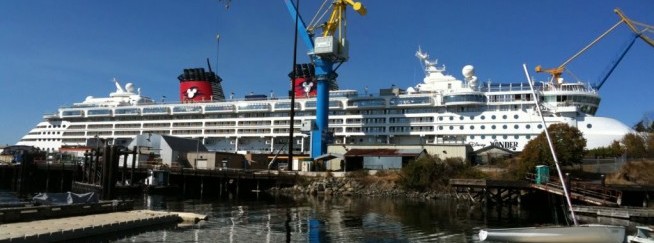Shipbuilding is alive and strong
Date: April 30, 2016
Source: Times Colonist
The transfer of HMCS Regina back to the Royal Canadian Navy signals more than the completion of modernization for the navy’s 12 frigates; it also proves that B.C.’s shipbuilding industry, in its death throes only a few years ago, has revived and is thriving.
Defence Minister Harjit Sajjan and other dignitaries were in Esquimalt Friday for the ceremony in which the frigate was transferred from Victoria Shipyards to the Department of National Defence Dockyard. Regina was the last of five Halifax-class frigates to undergo modernization and upgrading at Seaspan’s Victoria Shipyards under the $4.3-billion Frigate Life Extension program. The other seven vessels were upgraded at Irving Shipbuilding’s Halifax Shipyards.
HMCS Calgary was the first frigate into Victoria Shipyards for a 12-month refit, and HMCS Regina was the final one. Other frigates that came through were HMCS Winnipeg, Vancouver and Ottawa.
The project was completed on time and on budget, said Seaspan CEO Jonathan Whitworth who, along with several other Seaspan executives, visited the Times Colonist editorial board Friday. When the project was launched, Seaspan promised it would be completed by May 1, 2016. It was.
The Canadian government’s National Shipbuilding Strategy has been a game-changer for the West Coast shipbuilding industry. Whitworth said that in 2008, B.C.’s shipyards were on their last legs. The Vancouver Shipyard employed 52 tradespeople in 2009; now, it has 380 tradespeople involved in the national program and predicts that number will nearly double as the program reaches peak production. It has bolstered its office staff with 391 new employees to support that work, and expects to add 100 office staff positions in 2016.
In addition to the frigate work, Seaspan has received contracts to build new vessels for the federal government, including three offshore fisheries science vessels, two joint-support ships, one offshore oceanographic science vessel, a polar icebreaker and up to five offshore patrol vessels and five medium-endurance multi-tasked vessels.
Victoria Shipyards built 29 motor lifeboats for the Canadian Coast Guard, and designed and built Orca-class patrol vessels — eight of them for the price of six. The shipyard also has the contract to upgrade the navy’s Victoria-class submarines.
But Seaspan doesn’t depend solely on federal government contracts. It does overhauls on all types of vessels. Cruise ships, such as the Celebrity Millenium that tied up at the Esquimalt Graving Dock this week, come here to be refitted, an intense, 10- to 14-day process that employs hundreds.
See the full article at: http://www.timescolonist.com/opinion/editorials/editorial-shipbuilding-is-alive-and-strong-1.2243642#sthash.OERDv9ia.dpuf



Site design by Ravensfoot